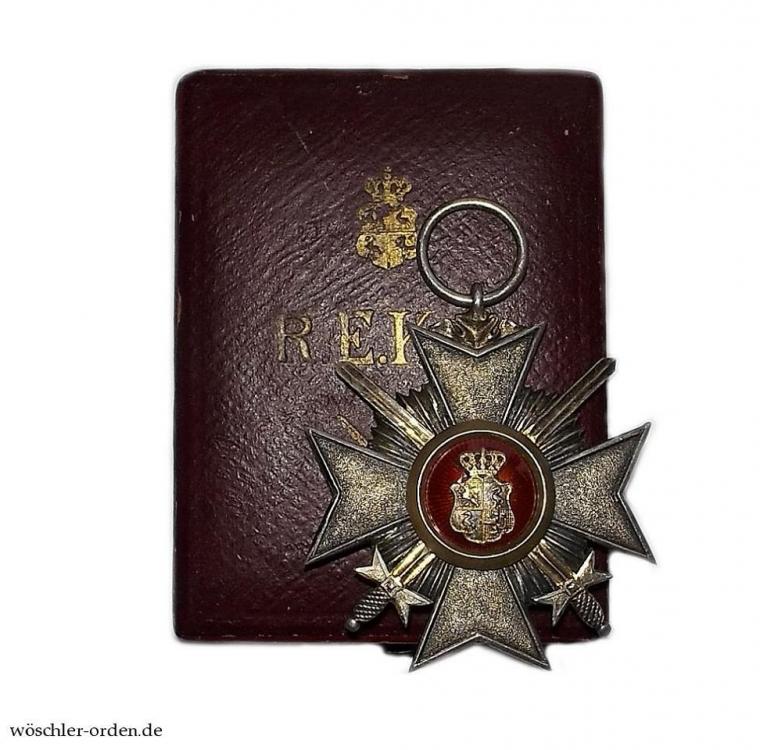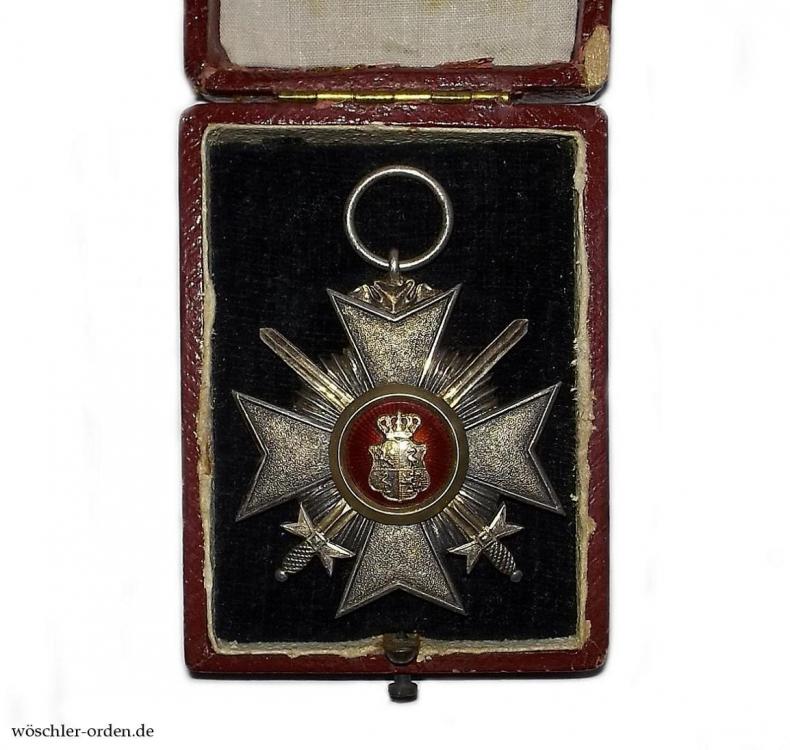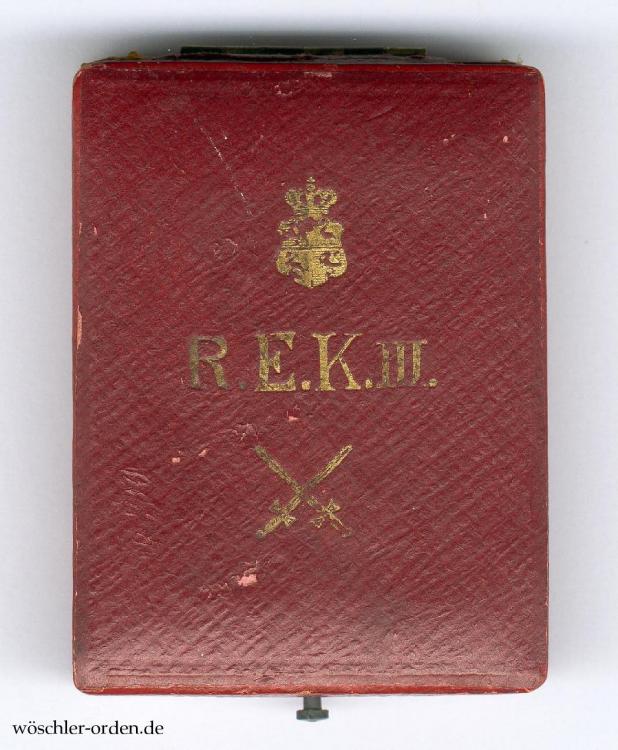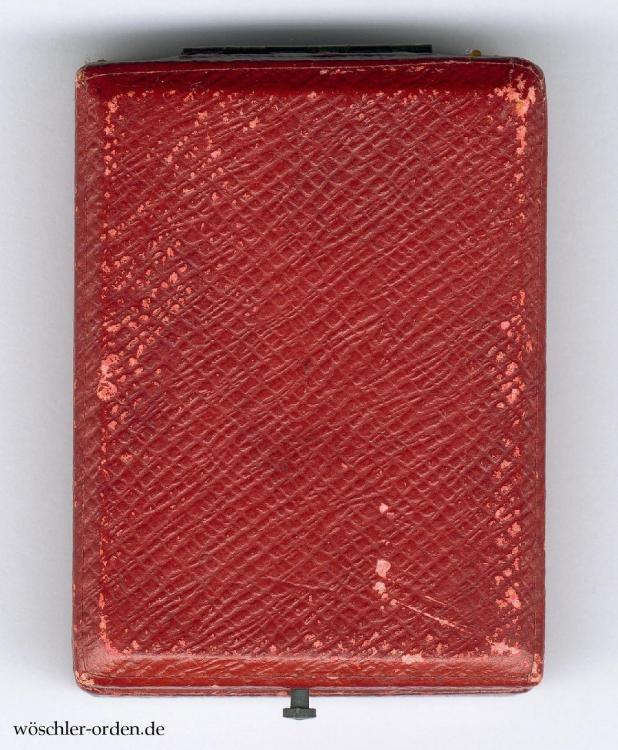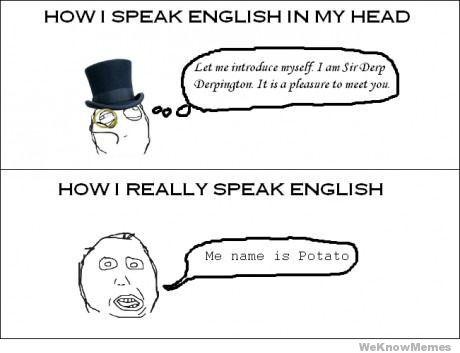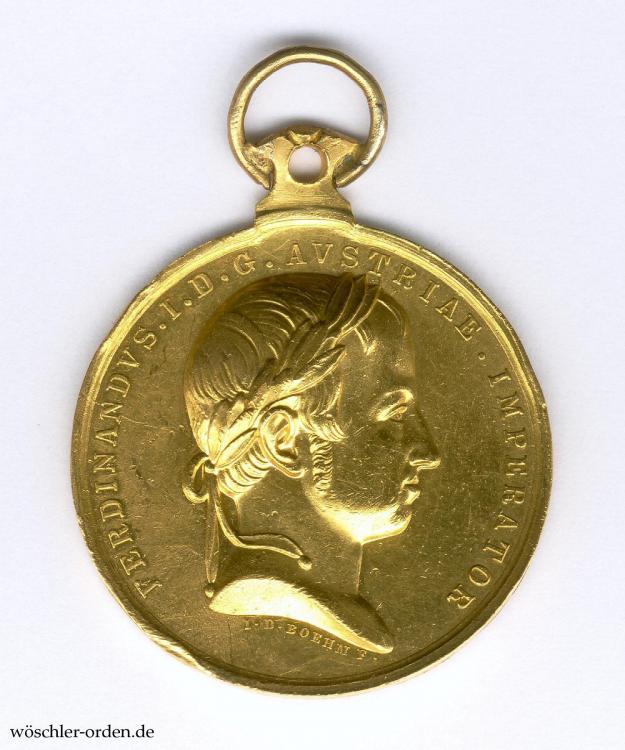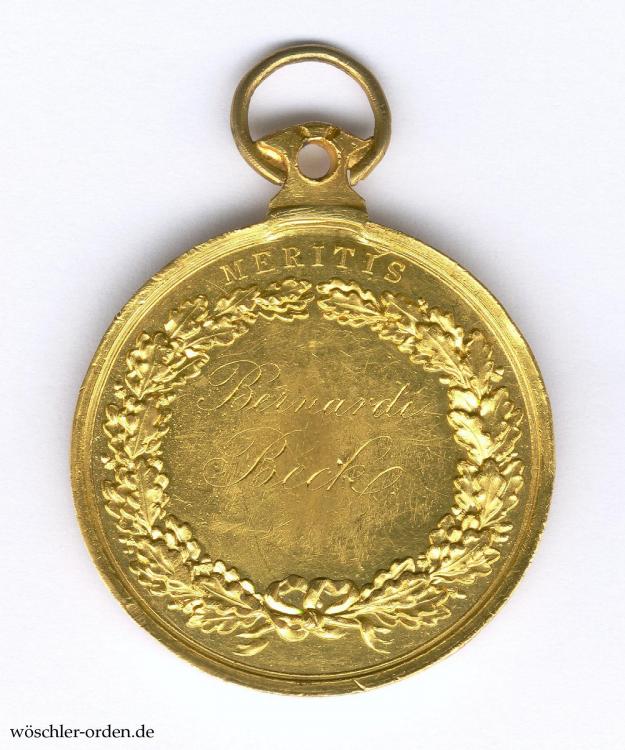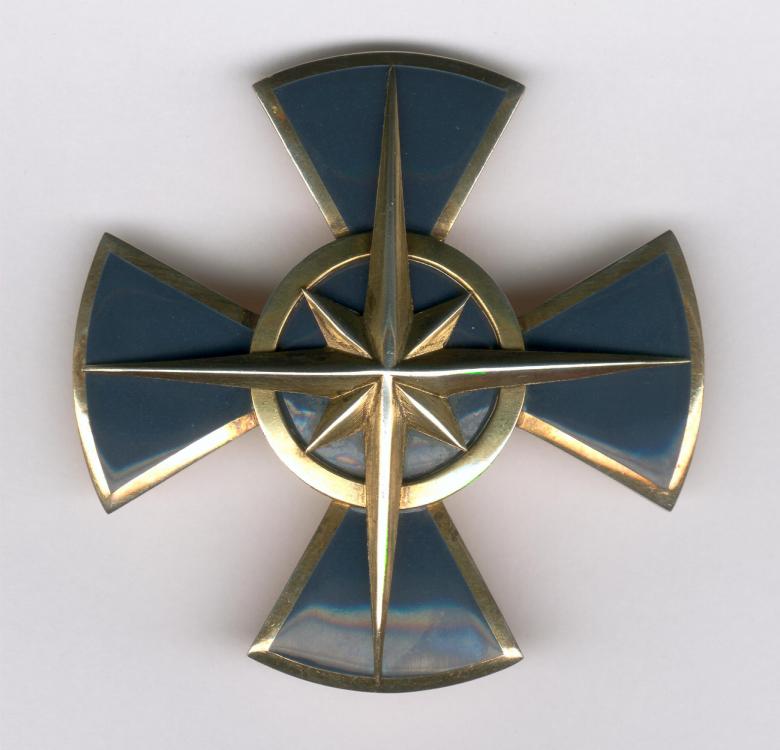-
Posts
3,086 -
Joined
-
Days Won
14
Content Type
Profiles
Forums
Blogs
Gallery
Events
Store
Everything posted by saschaw
-
I'm far from an expert on this most confusing medals, but I do like it from the general look. I cannot tell the maker, unfortunately, but there were probably some others involved, at least for the post-war era - which includes post-war awards by the former Duke as well as privately purchased wearers' copies. Regarding the swords clasp, I'm not even sure if they were awarded in this combination? It seems to be the same as for the merit medals of the house order, and could be added. Not saying it is, but I just couldn't judge this. I prefer the ones with additional engraved date that, from my understanding, were exclusively for this award. Henning Volle, in his 2014 volume on the German "Great War" awards Stiftungen und Erneuerungen von deutschen Orden und Ehrenzeichen im Ersten Weltkrieg, published by the DGO, mentions the possibility of such combinations, for they are known in collections. However, the primary sources are difficult to interpret, thus the uncertainty.
-
Graham, I might be a bit late to the party, but... when Künker sold another part of the Peter Groch collection in autumn, there where five different examples of this medal offered. Might that be a helpful reference? Even later to another party: Revisiting the whole thread, I'd suggest that Daniel Cole's example, shown May 18, 2011(!), is not and never was a Herzog-Carl-Eduard-Medaille, but rather the Ehrenzeichen für Heimatverdienst, which is an award on its own, with its own ribbon - but with no own design. There are some minor traces of the bronze toning left... the two medal bars shown by 1812 Overture compare these two awards most vividly!
-
91-old-inf-reg, your list has some mistakes, so I took von Schleicher's official entry from the 1929 Reichswehr rank list. For the abbreviations, you can check here. If there's anything unclear, please don't hesitate to ask! I'd not be so sure about the term "Kriegsdekoration", but what you mean is right, of course: The wreath is an integral part of the order's design for all but the lowest grade, no matter if given in peace or war.
-
I think it's not. For an active officer with pre-war RAO4, it's almost, if not totally impossible to have no XXV long service award by at least 1920. Most or many of them had that already in 1914. Our late "Rick Research" made some statistic on that matter years ago, but I cannot find the proper thread at the moment... Again, I doubt we'll find a better fit: In the 1914 rank list, Will is listed with the Russian RSt3 only. But given he has been in Husaren-Regiment „Kaiser Franz Josef von Österreich, König von Ungarn“ (Schleswig-Holsteinisches) Nr. 16, he probably had the Silberne Inhaber-Jubiläumsmedaille 1908 für Ausländer as well - the last ribbon in the bar. Jubilee medals remained unlisted in Prussian rank lists, unfortunately. I cannot find a Franz Joseph order for him in 1914, and the Reichswehr rank list doesn't list peace time awards, so this would have to have been awarded in 1914, after the lists were printed. It's similar with the Swedish Svärdsorden, but quite some are known to be handed out to German officers soon after the war ended... and with it, Sweden's neutrality. The Reichswehr rank list (1924 volume used) shows exactly the war awards worn here: HOH3X, EK1, HH and ÖM3K. Also listed but not visible is a Wounded Badge, but worn below the EK1, the picture just cuts it out. Not that unusual, in my eyes...
-
My best guess would be "24", but I'm no expert on 1939 EKs, and my eyes aren't good enough to compare. You'll might find pictures for comparison of all cross types on ek1-dna.de ...
-
A great overview on the Baden awards, the most beautiful and interesting of all, with some not too common pieces! You do know two don't come with the proper ribbons, I assume? You can check ehrenzeichen-orden.de for the proper ribbons: https://www.ehrenzeichen-orden.de/deutsche-staaten/medaille-fur-arbeiter-und-dienstboten-1895.html https://www.ehrenzeichen-orden.de/deutsche-staaten/felddienst-auszeichnung-1839.html I'm going to send you an email on this matter...
-
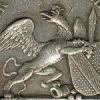
EK 1870 Researching an 1870 EK awardee
saschaw replied to dond's topic in Germany: All Eras: The Iron Cross
I'm pushing this up, for there isn't a pinned thread with the 1870 EK roll... but that would require someone to find it online... and I'm not aware it is to be found anywhere! The German DGO site has a hand-typed, well-readable pdf file list of the EK1 winners, made by a most diligent DGO member (who is a GMIC user as well: "NavalMark"). Probably exciting news for all those who hadn't found it before... https://www.deutsche-gesellschaft-fuer-ordenskunde.de/DGOWP/links/verleihungslisten/preussen/ -
I honestly don't know, maybe one of the EK gurus has an idea. I could well imagine, however, these did come up still in the "Great War" era, and not necessarily afterwards. But, as said, I don't know for sure. My focus always was on award types, not on these fancy private purchase pieces.
-
I agree with the idea this is a Fürstlich Reußisches Ehrenkreuz, III. Klasse mit Schwertern that was, for whatever silly reason, worn on the neck. Here's some pictures of a cased example I sold maybe three years ago to compare with. The photo quality is not really good, but I'm very close to 100% positive it fits...
-
A nice and not too usual cross, and Komtur already explained why. Only one in (full) gold could be more desirable... I have seen this quite some times before, especially with RAO and KO crosses in gold. Sounds odd, but I don't think this is a damage caused by wear, but rather a contemporary production flaw. When such a cross is assembled, from some thin gold sheet frames, it doesn't take much to get some asymmetry involved... I wouldn't be too sure about that! For reasons I do not know, golden RAOs centers often have a rather strong gold patina. It might be their purity which might be lower than the cross body's, or they "suffered" from the way they were fixed to the cross... I really don't know why - but I wouldn't assume this centers to be gilt replacements.
-
Then nothing is 100%, it seems. "We." 1st class crosses are considered to be early war award types, and there were only five makers to supply the GOK with 1st class crosses until 1917: Joh. Wagner & Sohn, Sy & Wagner, J. Godet & Sohn, Gebr. Friedländer and J. H. Werner - all from Berlin. In my eyes, everything fits perfectly with this attribution... Alex, I think ixhs was referring to maker marks in the eyelet only, not to additional workers' marks and such... those are indeed known for some few more makers.
-
The problem with the attribution of unmarked 1914 crosses is many different makers used generic cores that were made by one of them or even a third party supplier. Few makers of EKs had their own, exclusive cores. With an additional swapping of frames by some makers (or rather "makers"?), it's sometimes just impossible to keep unmarked crosses apart. Enjoy this cross for what it is: a nice and unusual, authentic 1st class - but probably not attributable to any certain firm.
-
I thought it might be a good idea to push this lovely, interesting thread up again - the first one I posted in, after I became a member of this amazing community more than thirteen years ago, by the way! Despite his son claimed it was the big one and, to be fair, it is big, Bernhard Beck received "only" the medium medal. I was able to obtain it some years ago, among some of his other awards, but as I cannot keep everything I like, I consigned it to Bene Merenti auction, where it will be sold Friday next week. Just to let you know, in case someone is interested and can, other than I, afford it...
-
Here's my example that will probably be part of my site's next update. The Honour Cross 2nd class is the second most "common" class of this order, with nine recipients known. In total, the list of known recipients names 90 persons - for all 27 classes and grades(!) of this order combined. See here for the list published by Dr. Lars Adler in October 2018.



